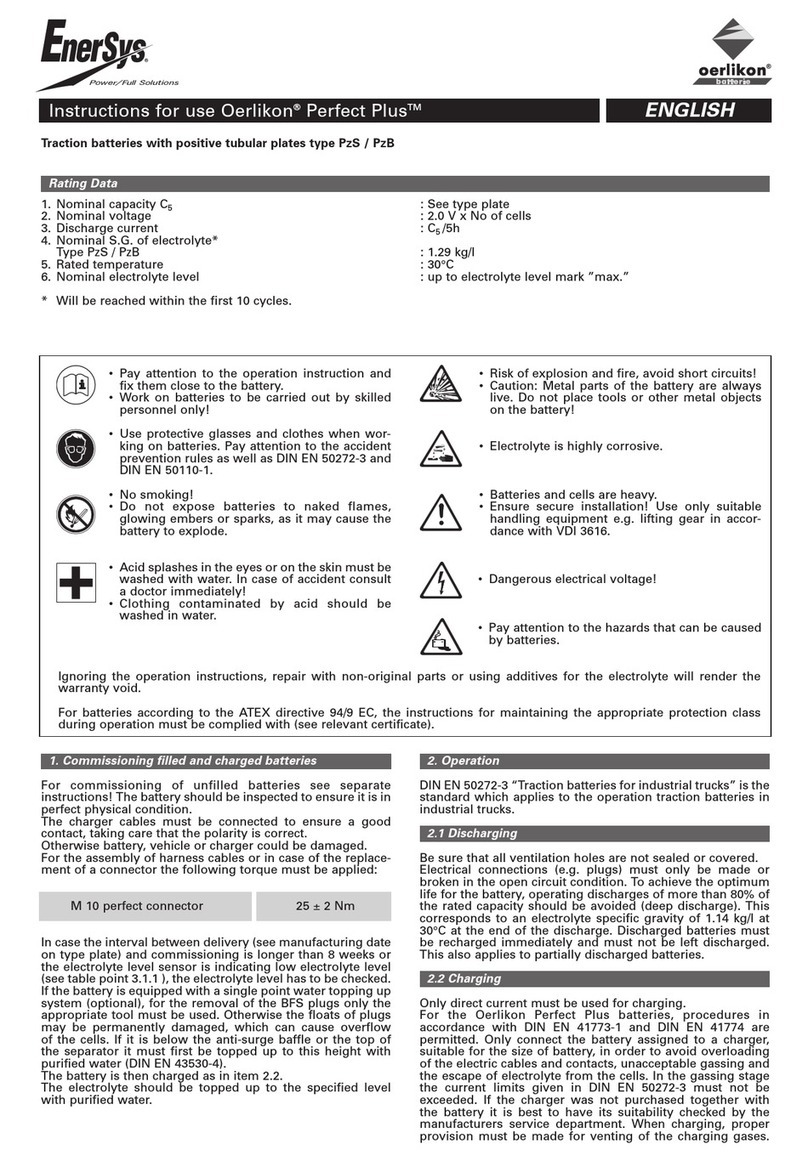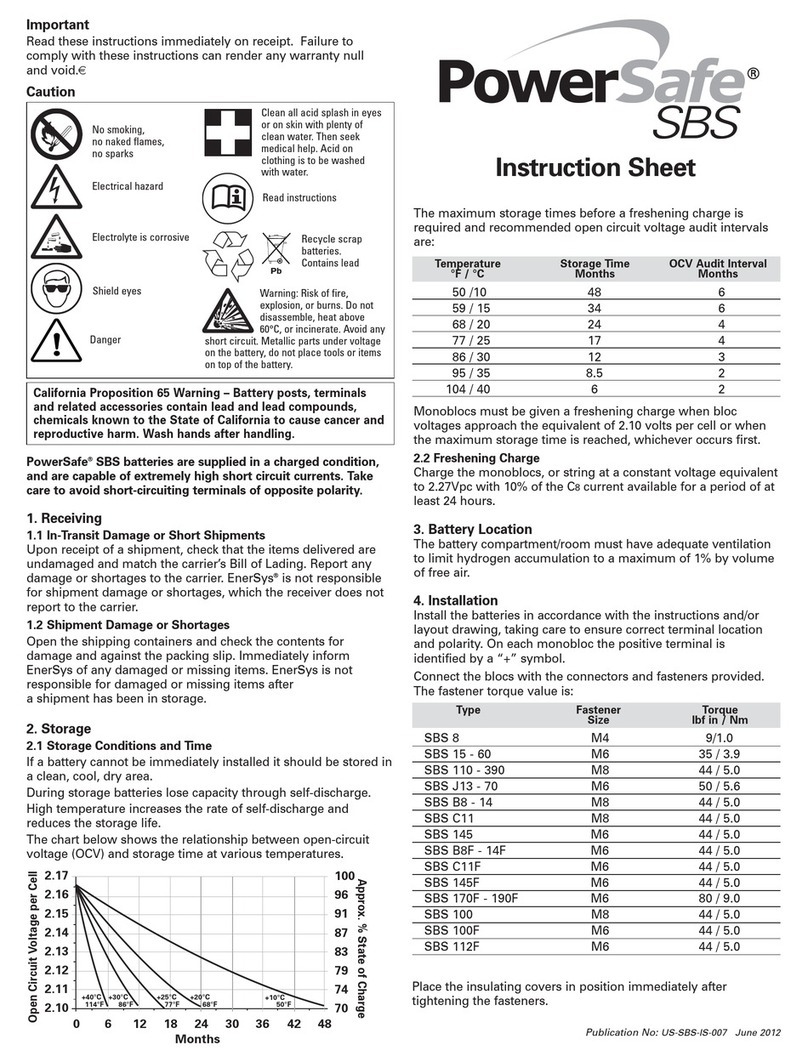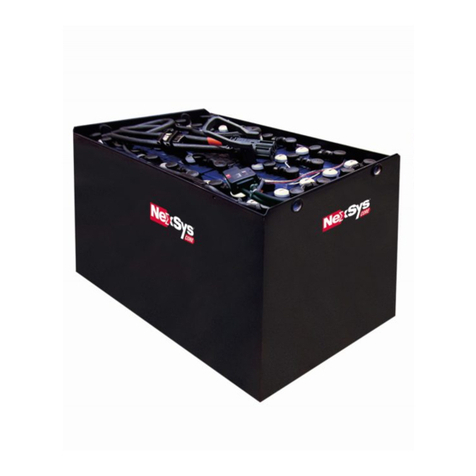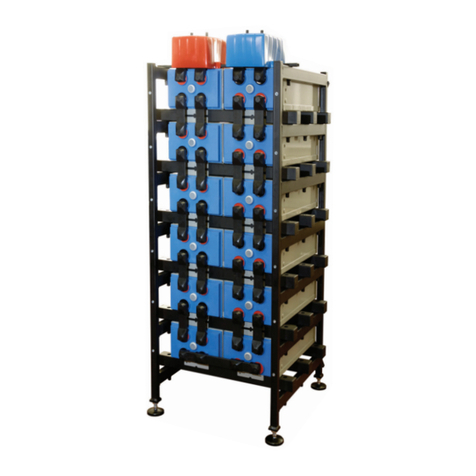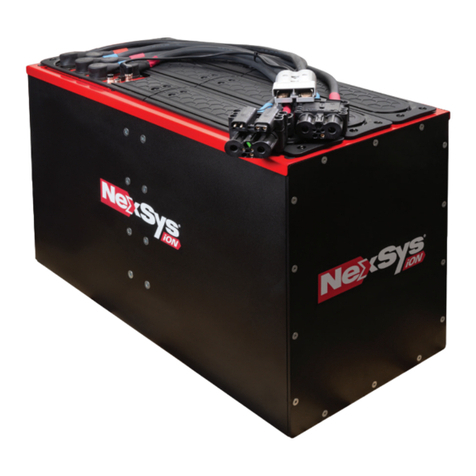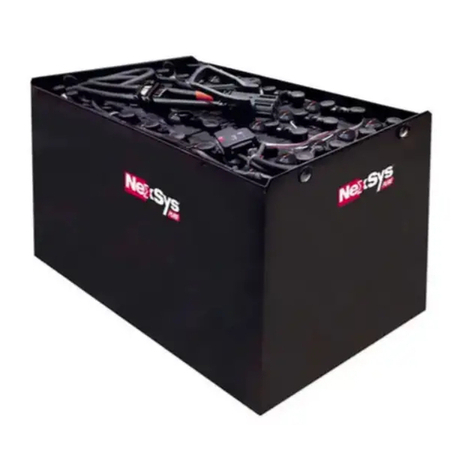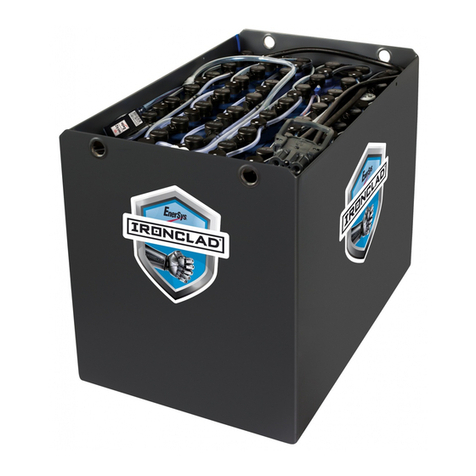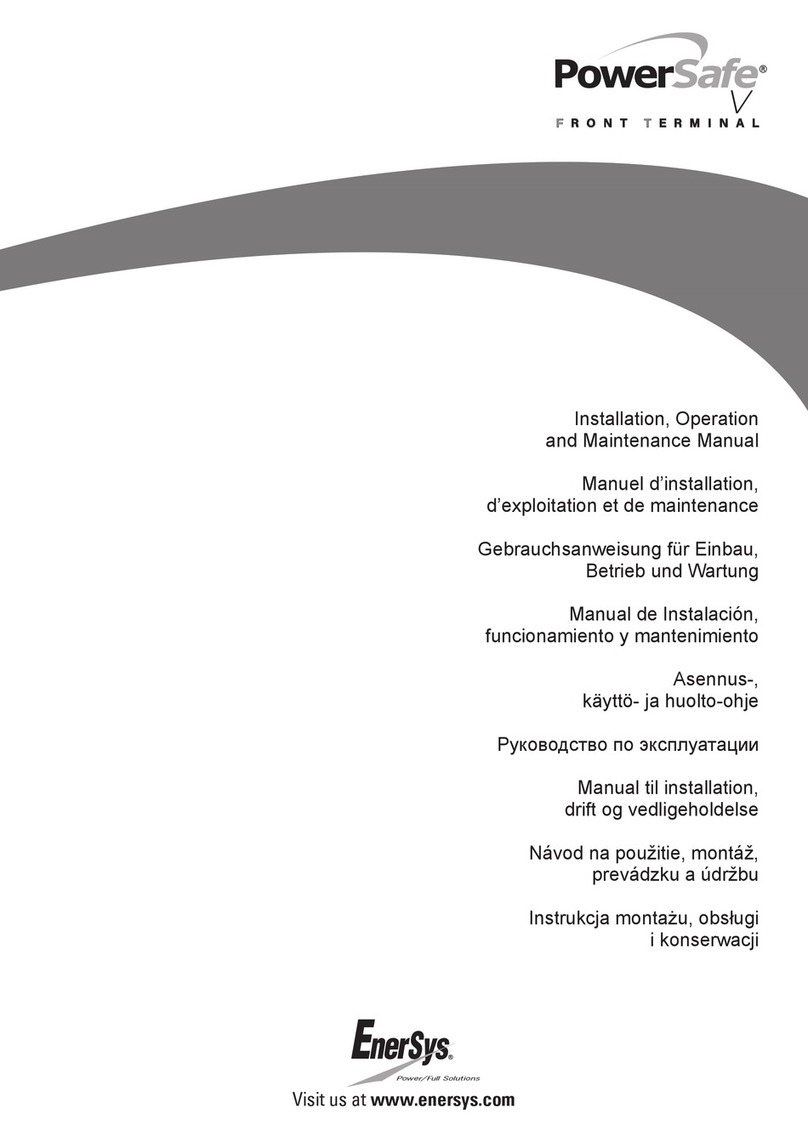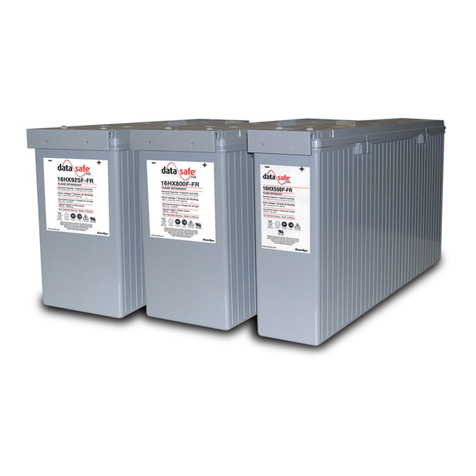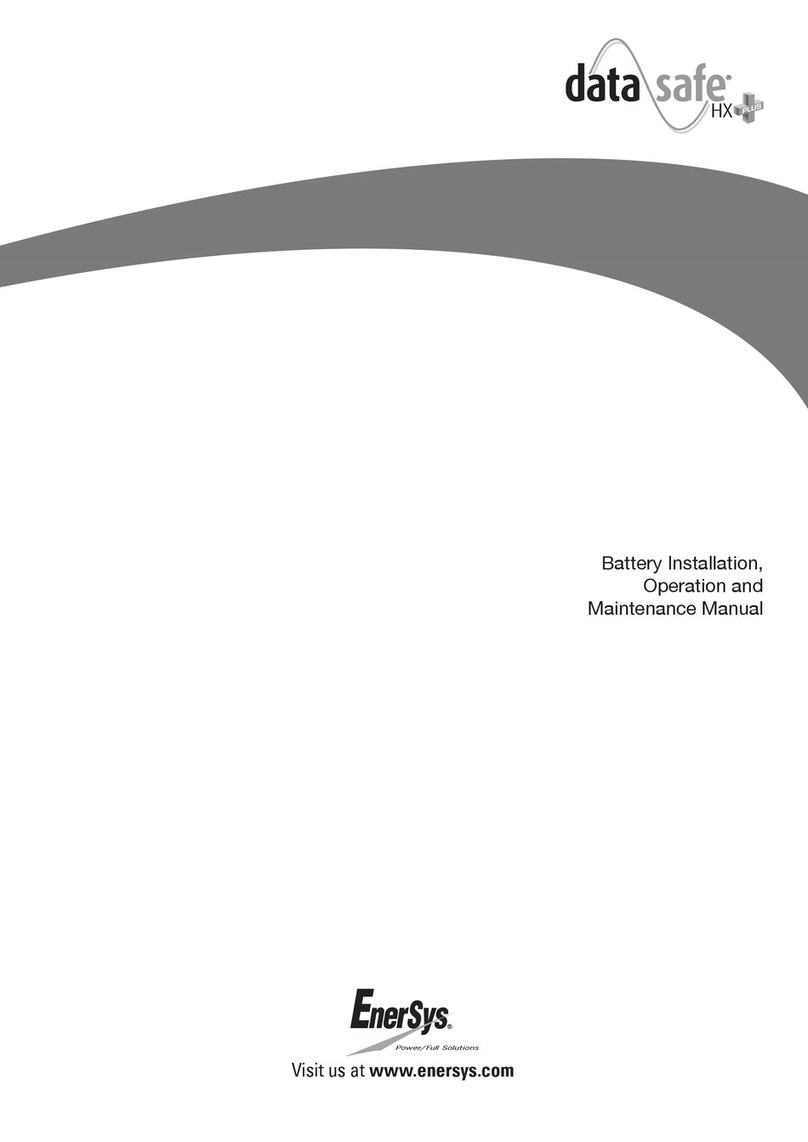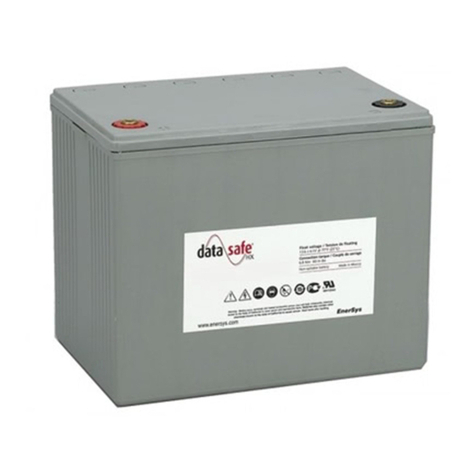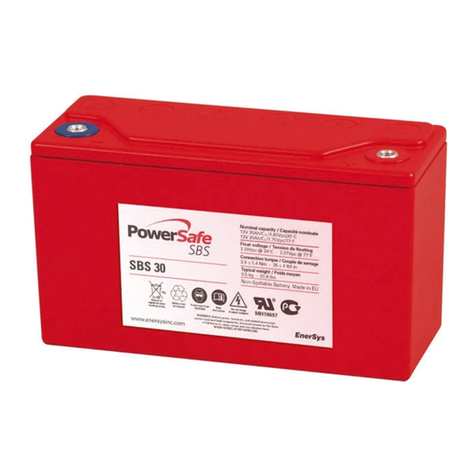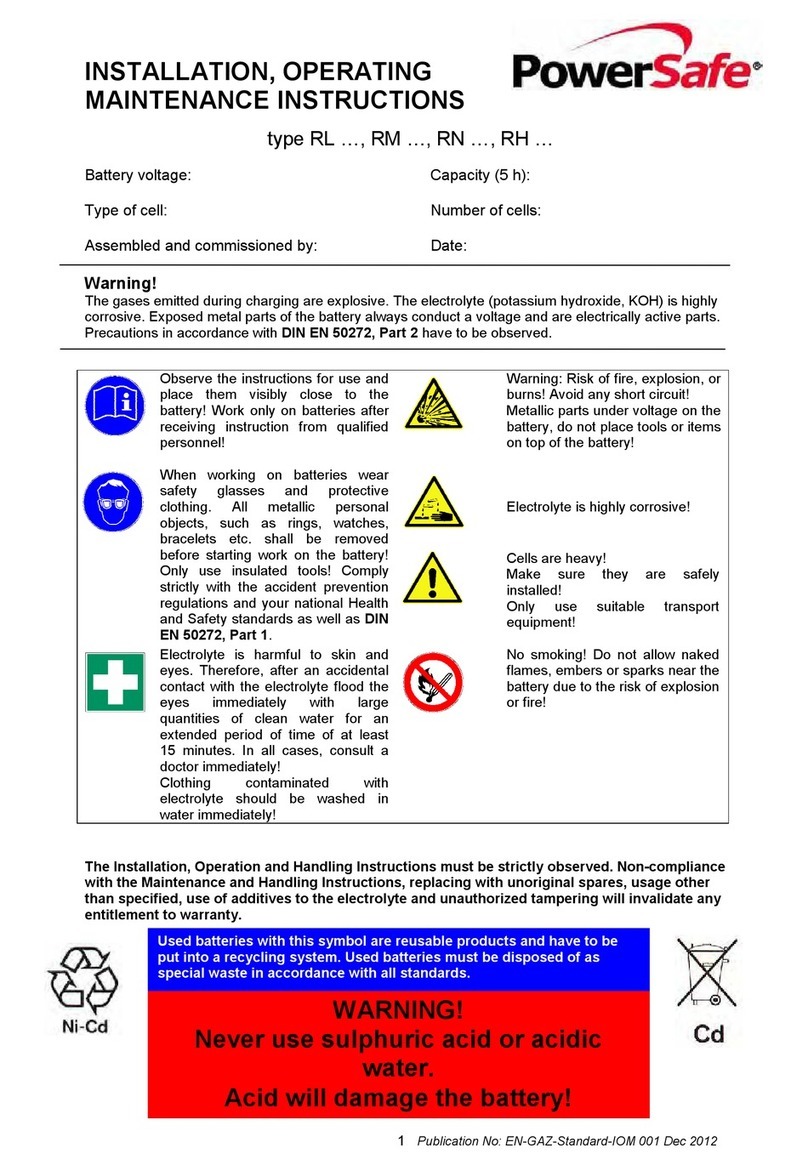
The maximum storage times before a refresh charge is required and
recommended OCV audit intervals are:
Batteries must be given a refresh charge when the OCV approaches the
equivalent of 2.10 Volts per cell (Vpc) or when the maximum storage time is
reached, whichever occurs first.
Temperature °F (°C) Storage Time (Months)
OCV Audit Intervals (Months)
50 (10) 48 12
59 (15) 34 12
68 (20) 24 12
77 (25) 17 6
86 (30) 12 6
95 (35) 8.5 3
104 (40) 6 3
AM-SBSXL-IS AA June 2019 3
2.2. Freshening Charge
Charge the module or string of modules at a constant voltage equivalent to
2.27Vpc with current limited to 10A per 100Ah nominal capacity for a period
of at least 24 hours, but with a maximum of 48 hours. Use temperature
compensation as indicated in Section 5. Start monitoring the charging current
21 hours after initiating the freshening charge. The charge is complete when
the current stabilizes. Current stabilization is defined as three current readings
at least one hour apart within five percent of each other. Do not charge in an air
tight enclosure.
Completing a freshening charge according to the instruction will reset the
storage OCV audit interval and suggested maximum storage time. If voltage
drops below 2.10Vpc contact EnerSys for instruction.
3. Battery Location
Batteries must be installed in accordance with local/national laws, regulations
and standards. The battery compartment/room must have adequate
ventilation to limit hydrogen accumulation to a maximum of 1% by volume.
Please contact your EnerSys®representative for further advice on this topic.
4. Installation
PowerSafe®SBS XL batteries can be installed on their base or horizontally on
their longest side.
Each monobloc is supplied with the terminal/connector fasteners.
On each monobloc the positive terminal is identified by a “+” symbol. Install
the batteries in accordance with the instructions and/or layout drawing,
taking care to ensure correct terminal location and polarity.
Connect the blocs with the connectors and fasteners provided. Torque the
fasteners to the value indicated on the product label.
Place the insulating covers in position immediately after tightening the
fasteners.
5. Operation
Optimum performance and service life are achieved at a temperature of
68°F (20°C) to 77°F (25°C). The operating temperature range is -40°F (-40°C)
to 131°F (55°C) with short term excursions to 149°F (65°C) permissible.
5.1. Standby / Float Operation
Constant voltage chargers are recommended. The charging voltage should
be set at the equivalent of 2.29Vpc at 68°F (20°C) or 2.27Vpc at 77°F (25°C).
The minimum charging voltage, at any temperature, is 2.21Vpc. The
recommended float voltage temperature compensation is as follows:
5.2. Charging Current
Due to the very low internal resistance PowerSafe SBS XL batteries will accept
unlimited current during recharge but for cost and practical purposes in float
applications where recharge time to repeat duty is not critical, the rectifier
current can be limited to the load plus 0.1C8Amps.
5.3. Discharging
Batteries must not be left in a discharged condition after supplying the load but
must immediately return to recharge mode.
Failure to observe these conditions may result in greatly reduced service life.
5.4. Accidental Deep Discharging
For optimum operation the minimum voltage of the system should be related to
the duty as follows:
In order to protect the battery it is advisable to have system monitoring and low
voltage cut off.
Deep discharge will produce a premature deterioration of the battery and a
noticeable reduction in the life expectancy of the battery.
5.5. Effect of Temperature
The temperature has an effect on the battery capacity. With increased operating
temperature capacity increases, likewise with decreasing temperature the
capacity decreases. Temperatures exceeding 95°F (35°C) will increase the Total
Cost of Ownership (TCO) of this battery.
6. Maintenance
In practice, the user usually specifies the maintenance schedule based on
site criticality, location and manpower. However, the following may be used
as a suggested maintenance schedule. Typically, the maintenance frequency
for standard Valve Regulated Lead Acid (VRLA) batteries is scheduled every
6 months but as a result of the increased design life inherent with the
PowerSafe SBS XL battery range this interval frequency can be extended to
deliver additional TCO benefit, particularly during the early period of service (as
the battery approaches 80% of the intended service it would be beneficial to
increase the frequency of maintenance).
Keep a logbook to record values, power outages, discharge tests, etc.
•Measure the battery string voltage. If necessary, adjust the float voltage to
the correct value.
•Measure individual bloc voltages. After 12 months of operation
blocs should be within stated tolerance of the average voltage value
as specified in the Instruction Manual.
•Check the ambient temperature in the immediate environment.
•Inspect for contamination by dust, loose or corroded connections.
If necessary, isolate the string/bloc and clean with a damp soft cloth.
Warning: Do NOT use any type of oil, solvent, detergent, petroleum-based
solvent or ammonia solution to clean the battery containers or lids. These
materials will cause permanent damage to the battery container and lid and will
void the warranty.
6.1. State of Health Monitoring
A load test should be carried out typically once a year.
Capacity discharge testing is considered as the only true guide to state
of health but can be complimented by the use of Ohmic measurement
trending e.g. Conductance.
•A discharge test should only be carried out on a fully charged battery.
Duty Minimum end voltage
5 min ≤t ≤1h 1.65V
1h ≤t ≤5h 1.70V
5h ≤t ≤8h 1.75V
8h ≤t ≤20h 1.80V
Temperature °F (°C)
50 (10) 59 (15) 68 (20) 77 (25) 86 (30) 95 (35)
104 (40)
Recommended 2.33 2.31 2.29 2.27 2.25 2.23 2.21
Minimum 2.31 2.29 2.27 2.25 2.23 2.21 2.21




